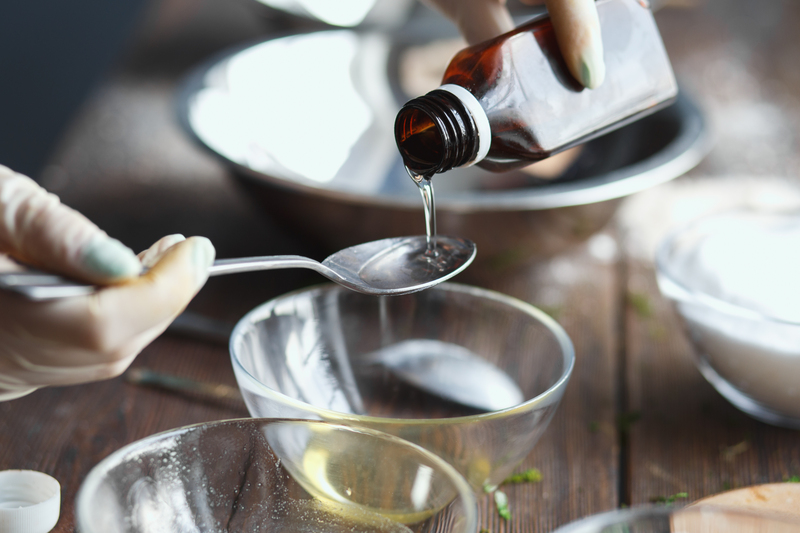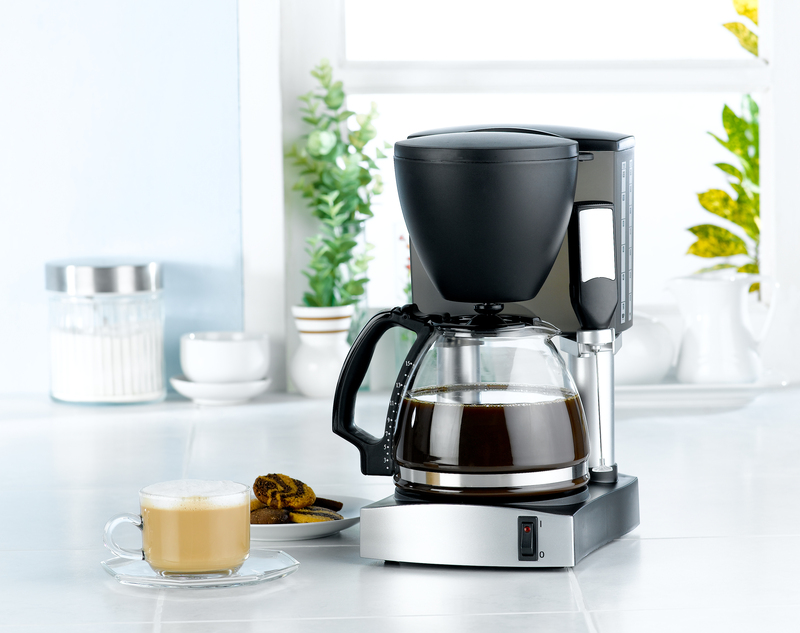Innovative Methods for Cleaning Burnt-on Residue Off Stovetops
Posted on 22/05/2025
Innovative Methods for Cleaning Burnt-on Residue Off Stovetops
Burnt-on residue is a common nuisance for anyone who enjoys home cooking. No matter how careful you are, grease splatters, and spills can quickly turn into tough, stubborn stains that regular wiping simply cannot remove. Traditional cleaning methods often involve harsh chemicals or hours of scrubbing, neither of which are appealing. That's why finding innovative methods for cleaning burnt-on residue off stovetops is both essential and rewarding. In this comprehensive guide, we'll walk you through the most effective and modern techniques to restore your stovetop's shine with minimal effort.
Understanding the Types of Stovetops
Before diving into burnt-on residue cleaning solutions, it's important to consider the type of stovetop you have. Stovetops generally fall into four categories:
- Electric coil
- Gas burners
- Glass ceramic
- Induction cooktops
Certain cleaning products and techniques are more suited to particular materials. For example, while metal scrapers can be useful for glass-ceramic cooktops, they might damage the finish on gas or electric stovetops. Always consult your manufacturer's guidelines before trying any new method.

Common Challenges with Cleaning Burnt-on Residue
The difference between a quick wipe-down and a burnt-on mess often comes down to speed and heat. When spills aren't cleaned promptly, the high heat from cooking causes them to carbonize, sticking fiercely to your stovetop surface. Some of the main challenges include:
- Hardened carbon buildup that resists scrubbing
- Grease stains that spread when scrubbed
- Risk of surface scratching if improper tools are used
- Lingering odors from burnt residue
So how can you clean your stovetop efficiently without causing damage? Let's explore innovative stovetop cleaning solutions that are gentle, effective, and often eco-friendly.
1. The Power of Baking Soda & Hydrogen Peroxide
A Game-Changing Combination for Stubborn Residue
One of the most innovative ways to clean burnt-on residue off stovetops is by harnessing the synergistic effects of baking soda and hydrogen peroxide. Both agents are renowned for their gentle abrasiveness and deep-cleaning properties. Here's how to use them:
- Step 1: Sprinkle a generous layer of baking soda over the cooled, burnt-on areas.
- Step 2: Slowly pour hydrogen peroxide over the baking soda, allowing it to fizz and react.
- Step 3: Let the mixture sit for at least 15-20 minutes. For severe stains, let it rest longer.
- Step 4: Use a soft scrub pad or a cloth to work the paste into the residue. Wipe clean with a damp cloth.
This chemical reaction helps lift burnt-on gunk without the need for hazardous cleaners, making it a safe choice for most stovetops--including glass and ceramic surfaces.
2. Steam Cleaning with a Handheld Steamer
Harnessing Vapor Power for Grease-Free Results
Steam cleaning is an emerging trend in home care, and its application for burnt stovetop cleaning cannot be understated. A compact handheld steam cleaner can blast persistent stains without requiring additional products. Here's why this method is so effective:
- Superheated vapor penetrates and loosens stubborn residue.
- It disinfects as it cleans, killing bacteria and eliminating odors.
- No scrubbing or abrasive pads required--just wipe away loosened debris after steaming.
- Safe for all stovetop types, especially delicate glass or induction surfaces.
To use a handheld steamer, fill it according to the manufacturer's instructions, direct the steam jet at the burnt areas, and allow the heat and moisture to do their work. Follow up with a microfiber cloth for a streak-free finish.
3. Enzyme-Based Cleaners: A Green Revolution
How Enzymes Tackle Burnt Food Residue
Traditional chemical cleaners may deliver fast results, but they often contain harsh ingredients that can damage your stovetop and pose health risks. Enter enzyme-based products--one of the most innovative oven and stovetop cleaning solutions on the market today. Enzyme cleaners break down organic, carbon-based residue by dissolving it at the molecular level.
To use:
- Spray the enzyme cleaner directly onto the burnt-on spots.
- Allow it to sit according to product instructions (usually 15-30 minutes).
- Wipe clean, and repeat as necessary for deep stains.
These bio-based products are both eco-friendly and effective, making them a modern solution to a longstanding problem.
4. Razor Blade Scraping for Glass Cooktops
Precision Cleaning Without Scratches
For especially stubborn burnt-on gunk on glass stovetops, nothing beats a razor blade scraper when used properly. This technique can quickly lift hard carbon without scratching the smooth, delicate surface.
Guidelines for safe use:
- Ensure the stovetop is completely cool.
- Hold the razor blade at a 45-degree angle to the glass.
- Gently push the blade under the residue. Do not gouge or dig.
- Wipe away loosened material and finish with a soft cloth and a glass-safe cleaner.
Pro tip: Always use a fresh blade and never drag the blade directly along the glass to prevent scratching.
5. Removable Burner Parts: Soak and Steam
Disassembly for a Deep Clean
For gas or electric coil stovetops, many burnt-on messes happen around--and even underneath--the burners. The innovative method here is deep-soaking removable components for effortless residue removal.
- Remove burners, drip pans, and any detachable rings (consult your manual if unsure).
- Place these parts in a combination of hot water and dish soap, or add some baking soda for extra power.
- Let them soak for 30-60 minutes.
- For extra stubborn residue, apply a paste of baking soda and water and let sit, or use a soft-bristle brush to scrub.
- Rinse thoroughly and let air dry before reassembling.
This technique ensures no residue is left hiding beneath the visible stovetop, resulting in a truly clean and odor-free kitchen appliance.
6. Vinegar and Citrus for Natural Degreasing
Two Household Heroes to the Rescue
Natural acids found in vinegar and citrus fruits can dissolve burnt sugars and oils. These ingredients are both safe and cost-effective for cleaning heavy stovetop residue:
- Spray full-strength white vinegar onto the cooled stovetop and cover with a warm, damp cloth. Let sit for 10 minutes.
- For extra cleaning power, sprinkle salt or baking soda over the area before spraying with vinegar.
- Use a halved lemon to scrub sticky or greasy stains, its acidity helping cut through grime with added freshness.
- Rinse well with clean water to avoid leaving a sticky residue.
This method is gentle enough for daily use but strong enough to handle many tough jobs, especially when paired with the abrasiveness of salt or baking soda.
7. Commercial Cleaning Pads and Melamine Sponges
The Modern Solution for Quick Results
Today's market offers specialized melamine foam pads and stovetop-specific cleaning tools. While similar to traditional abrasives, these pads are engineered to be safer for delicate surfaces and can effectively lift burnt-on food residue without causing scratches or damage.
- Wet the pad and wring out excess water.
- Gently rub the affected area until the residue loosens.
- Wipe clean with a damp microfiber cloth.
Pro tip: Always test new products on a hidden area first to check for any adverse effects on surface gloss or color.
Preventative Maintenance Is the Key to Clean Stovetops
Now that you know the innovative stovetop cleaning techniques available, keeping your kitchen spotless becomes much easier. Remember, the best way to avoid tough burnt-on residue is to:
- Wipe up spills as soon as possible, ideally while they are still warm (but not hot).
- Use burner liners or spill guards for gas stoves to catch drips before they burn on.
- Incorporate a mild daily-cleansing routine to lower the risk of buildup.
- Schedule a weekly deep-cleaning session using your favorite methods from above.
By being proactive, you minimize the need for heavy-duty cleaning and extend the life and appearance of your appliance.
Summary: Find Your Best Solution for Burnt-on Stovetop Residue
There is no single "magic bullet" for cleaning burnt-on residue off your stovetop. Instead, a combination of methods--tested and tailored to your specific stovetop type and cleaning comfort--yields the best results.
- Baking soda and hydrogen peroxide--for most types of burnt messes
- Steam cleaning--for delicate or chemical-free kitchens
- Enzyme-based cleaners--for a green and powerful approach
- Razor blades--for tough carbon on glass tops
- Removable burner soaking--for gas and electric stovetops
- Vinegar & citrus--for natural degreasing and deodorizing
- Commercial cleaning pads--for fast, modern results
Whichever approach you choose, always prioritize safety and surface compatibility. With these innovative stovetop cleaning solutions in your toolkit, even the toughest burnt-on residue will be a challenge you can conquer with ease.

Frequently Asked Questions
Can I use oven cleaner on my stovetop?
Oven cleaners are generally too harsh for glass, induction, and enamel stovetops. Always check your appliance's care guide and test in a small area before full application.
Is vinegar safe on all stovetops?
Vinegar is suitable for most stovetops, but prolonged contact with unprotected metals (such as aluminum) can lead to corrosion. Use sparingly on these surfaces.
How often should I deep-clean my stovetop?
For best results, deep-clean your stovetop once a week--more often for heavy cooks, or immediately after significant spills or burnt-on events.
Conclusion
Don't let stubborn, burnt-on residue defeat you or mar the look of your kitchen. By embracing these cutting-edge and eco-friendly stovetop cleaning strategies, you can maintain a spotless, welcoming cooking area. Whether you prefer the chemical-free magic of steam, the cutting-edge power of enzyme sprays, or the old-school effectiveness of baking soda and vinegar, today's innovative methods for cleaning burnt-on residue off stovetops ensure a sparkling finish every time.
Try one or combine several of these innovative stovetop cleaning methods today and rediscover the joy of effortless cleanup!



